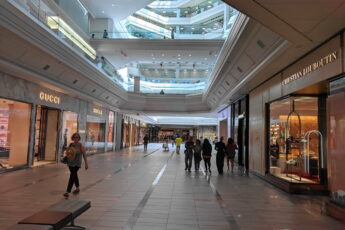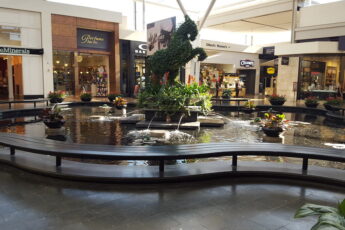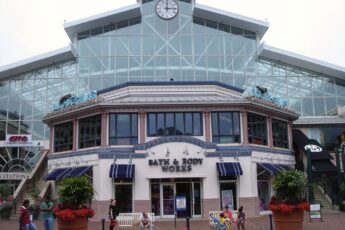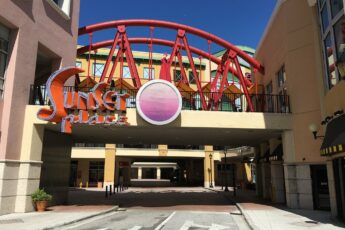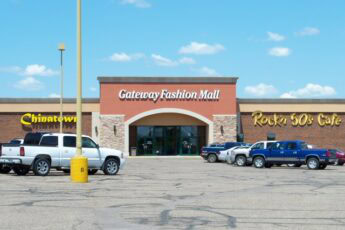Inception and Early Development
Penn Square Mall's planning began in the mid-1950s, led by developer Ben C. Wileman.
Originally named Belleview Shopping Center due to its proximity to the Belle Isle power plant, it was later renamed Penn Square Mall.
The project cost $12 million and was situated along the U.S. 66 Bypass in Oklahoma City. By 1960, the mall was completed, boasting 582,000 square feet of retail space on a 50-acre site.
Key tenants included John A. Brown, Montgomery Ward, Street's, Rothchild's, and Val-Gene's restaurant.
At the time, Montgomery Ward occupied 205,000 square feet, making it the largest in the nation.
The central location near Nichols Hills was strategic, drawing shoppers from the area.
Penn Square National Bank, established with $750,000 in capital, opened its doors in 1960, marking the mall's importance in Oklahoma City's commercial landscape.
To further enhance the shopping experience, the mall included diverse stores like Van Dyke Furs, Peyton-Marcus, and Humpty Dumpty.
These retailers contributed to making Penn Square Mall a premier shopping destination, attracting customers from Oklahoma City and beyond.
For more things to do in Oklahoma City, OK, Penn Square Mall remains a central hub.
The 1980s Transformation
In the early 1980s, competition from newer enclosed malls like Quail Springs Mall and Crossroads Mall started to impact Penn Square Mall.
To stay competitive, the mall underwent major changes.
In 1982, it was enclosed, creating a more comfortable shopping environment protected from the weather.
By 1988, Penn Square Mall had received a $100 million renovation.
This update added a second level and a food court, enhancing the shopping experience.
The renovation also included a multi-story parking structure, making it easier for shoppers to visit.
JMB purchased the mall in 1985 and played a key role in these improvements.
In 1995, JCPenney opened as a new anchor tenant, occupying a large space and drawing in more customers.
This addition marked another step in the mall's evolution, offering a variety of goods from clothing to home furnishings.
JCPenney's presence boosted the mall's appeal and foot traffic.
Throughout the 1980s and 1990s, Penn Square Mall continued to adapt to the changing retail landscape.
The management added new stores and updated facilities to keep up with shopper demands, ensuring the mall remained a key shopping destination in Oklahoma City.
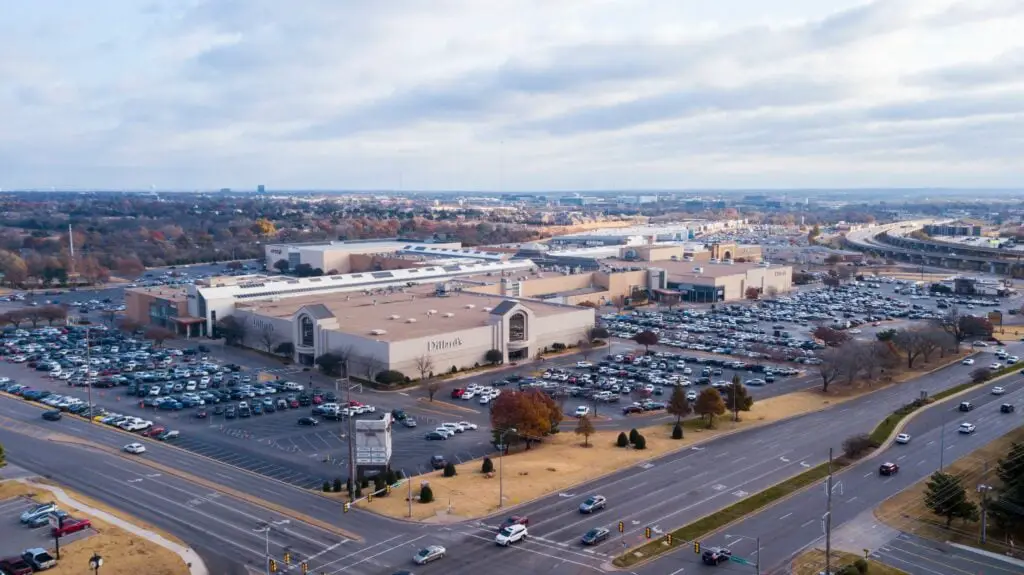
Bank Failure and Economic Impact
Penn Square Mall housed Penn Square Bank, which opened in 1960. The bank quickly grew and became a notable part of the mall's ecosystem.
However, on July 5, 1982, Penn Square Bank failed, causing widespread economic shockwaves.
The collapse was one of the largest bank failures in American history.
The bank's aggressive lending practices, especially in oil and gas loans, led to its downfall.
This failure exposed vulnerabilities in the banking system and resulted in tighter regulations.
The bank's failure had an impact beyond the mall. It affected local businesses and the national banking industry.
Chase Manhattan Bank in New York, Michigan National Bank, and Seattle First National Bank, which had purchased loans from Penn Square Bank, suffered losses, highlighting the interconnectedness of financial institutions.
Despite the bank's collapse, Penn Square Mall continued to operate and attract shoppers.
The mall adapted to the economic challenges and maintained its role as a central shopping destination in Oklahoma City.
This resilience showed the mall's ability to navigate through tough financial times.
Expansion and Renovation in the 2000s
The 2000s brought more changes and growth for Penn Square Mall.
In 2000, the nearby Belle Isle Station shopping center opened, featuring stores like Walmart Supercenter, Old Navy, and Linens 'n Things.
This expansion complemented the mall's offerings and attracted more visitors.
Major renovations took place within the mall. In 2000, Penn Square Mall underwent another update to stay current with retail trends.
This included modernizing interiors and adding new amenities to enhance the shopping experience.
John A. Brown, one of the original anchor stores, was sold to Dillard's in 1984.
By 2001, Dillard's expanded into the space vacated by Montgomery Ward, which had closed.
This addition strengthened the mall's appeal by offering more diverse shopping options.
In 2006, Foley's, which had been part of the mall's 1988 expansion, converted to Macy's.
This transition brought a well-known brand to the mall, attracting a new wave of shoppers.
The presence of Macy's solidified Penn Square Mall's status as a premier shopping destination in Oklahoma City.
New Additions and Store Changes
The presence of The Cheesecake Factory, which opened in 2006, added a dining attraction outside the mall.
This restaurant became a popular spot for visitors, complementing the shopping experience with a variety of menu options.
The 2010s brought several new stores and changes to Penn Square Mall. In 2013, Nordstrom Rack opened, replacing the bankrupt Linens 'n Things.
This addition drew many shoppers looking for designer deals at discounted prices.
In 2018, The Container Store opened in the mall's parking lot, offering a variety of storage and organization solutions.
That same year, Babies R Us closed due to the Toys R Us bankruptcy, and REI took over the space in 2019.
These changes kept the mall's offerings fresh and relevant to shopper needs.
Latest Developments (2023-2024)
In 2023, Penn Square Mall continued to evolve and attract new retailers.
Urban Outfitters, a popular lifestyle retailer, announced its first location in Oklahoma City, opened in the fall of 2023 near Center Court.
This store offers a variety of clothing, home décor, music, and beauty items, broadening the mall's appeal to a younger demographic.
GNC, a well-known health and wellness brand, also opened in the summer of 2023.
Located on the upper level near AMC Theatres, GNC offers dietary supplements for weight loss, strength, and performance.
These additions enhance the mall's diverse retail mix and draw more visitors.
The Oak development, a 20-acre mixed-use project located across from Penn Square Mall, has also influenced the area.
This new development includes retail spaces, office buildings, and a Hilton Lively Hotel, contributing to the local economy and increasing foot traffic to the mall.
As of 2024, Penn Square Mall remains a vital shopping destination in Oklahoma City.
Managed by Simon Property Group, the mall continues to evolve with the changing retail landscape.
The mix of anchor stores, including JCPenney, Macy's, two Dillard's locations, Forever 21, and AMC Theatres, keeps it bustling with activity.

